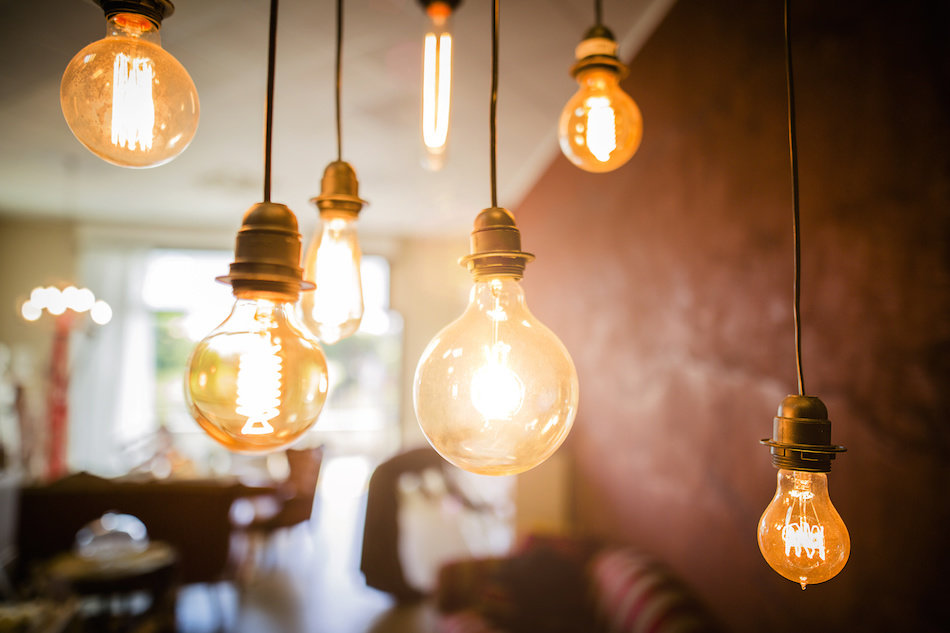Customize Home Lighting for Each Room's Needs
Posted by EdmontonRealEstate .ca on Tuesday, December 11th, 2018 at 12:30pm.
 Every home needs general illumination for indoor rooms as well as outdoor rooms. General lighting, specific task lighting, and planning for all contingencies when building or remodeling can be difficult. There are basic principles, however, for private and public spaces that will help guide those decisions.
Every home needs general illumination for indoor rooms as well as outdoor rooms. General lighting, specific task lighting, and planning for all contingencies when building or remodeling can be difficult. There are basic principles, however, for private and public spaces that will help guide those decisions.
5 Points to Consider:
- Is the room primarily for daytime activities or evening enjoyment?
- Is it an active space or one designed for rest, relaxation and privacy?
- Is the room designed for adults or children?
- Does the space support multiple uses, or is it meant for specific function?
- What is the room's orientation? Is there a lot of natural light?
The best lighting solutions for all rooms should include a layered approach. A layered approach to lighting means that the overhead light will be supplemented or enhanced by natural daylight, specific and directed task lighting, or unique decorative options. Also consider energy efficiency and smart technology lights and lighting.
Day and Night
Active daytime rooms, including kitchen, playrooms, study areas and multi-purpose public rooms, should be bright and inviting. These rooms also have more varied lighting needs than bedrooms. Electric lights should supplement natural daylight when possible, rather than supplanting it. Consider the architecture as well as the room's function.
In the kitchen, some good lighting options include recessed ceiling lighting for general illumination as well as directed lighting in food preparation and cleanup areas. Under cabinet lighting over countertops is always helpful. Display or art lighting can showcase belongings. Unique applications, including toe-kick rope lighting or above-cabinet ceiling spots can create unique ambience. Dimmers are as appropriate in the kitchen as in any other room.
Living Room or Den
Concentrate efforts and budget where the family tends to spend the most time. If a formal living room is used only when guests are present and primarily at night, a central chandelier or ceiling fan with light kit, along with strategically placed lamps, might be all that's needed.
In a den, the addition of recessed ceiling lights can eliminate corner shadows or focus directed light on architectural features. Table and floor lamps enhance conversation groupings, and specialty lighting addresses unique needs such as a game table pendant, perhaps, or bookcase and art lighting. Dimmers control glare and provide subtle background light for television viewing.
Sleeping Rooms
Even bedrooms need ample lighting during the day, especially if they have northern exposure or small windows. Children use their rooms for much more than sleeping, so lighting is important. Consider track lights, recessed cans or wall-mounted fixtures as modern alternatives to a single overhead light. Ceiling fans, with or without light kits, are good choices for energy efficiency. Coupled with a switched receptacle to provide lamplight upon entered the room, a fan is a good choice. It doubles convenience as well as improving functionality.
A bedroom is the perfect place to have a little fun and inject personality. Unique fixtures are appropriate: Consider themed ceiling fans, wall-mounted lights or pendants on either side of a bed, sconces for a window seat, a rope light to highlight a tray ceiling, or individual reading lamps for a master suite pair of chairs.
Bathrooms
Functional lighting is vital for grooming spaces, but bath lighting is sometimes a neglected area. Every bathroom should also have some mood lighting, particularly a modern master bath.
If there is little natural light in a room, think in terms of an overhead light to illuminate the entire space. Then add waterproof lighting over the tub and in the shower. Try to place lights on either side of makeup and shaving mirrors rather than above to minimize shadows. Also provide some sort of night lighting for safety and convenience.
How Lighting Affects Staging and Selling
Lighting makes a big difference during the home selling process. Home buyers rely on lighting in the home to show them the state of the house. Homes that are too dark may look small or dirty to a home buyer. Light in the home makes the house look cheerful and inviting. There are many ways that home sellers can enhance lighting in the house during a showing or for listing photographs.
Opening blinds lets natural light into the house. This is especially important in rooms with a northern or eastern exposure, since these rooms will get the least sunlight throughout the day.
Turning on all the lights in the home is another excellent way for the home seller to enhance lighting for buyers. Replacing all burned out bulbs before the showing will ensure that the home is as light and bright as it can be.
The correct lighting in a Summerside home can not only enhance the home, but improve the lives of those living in the home.

